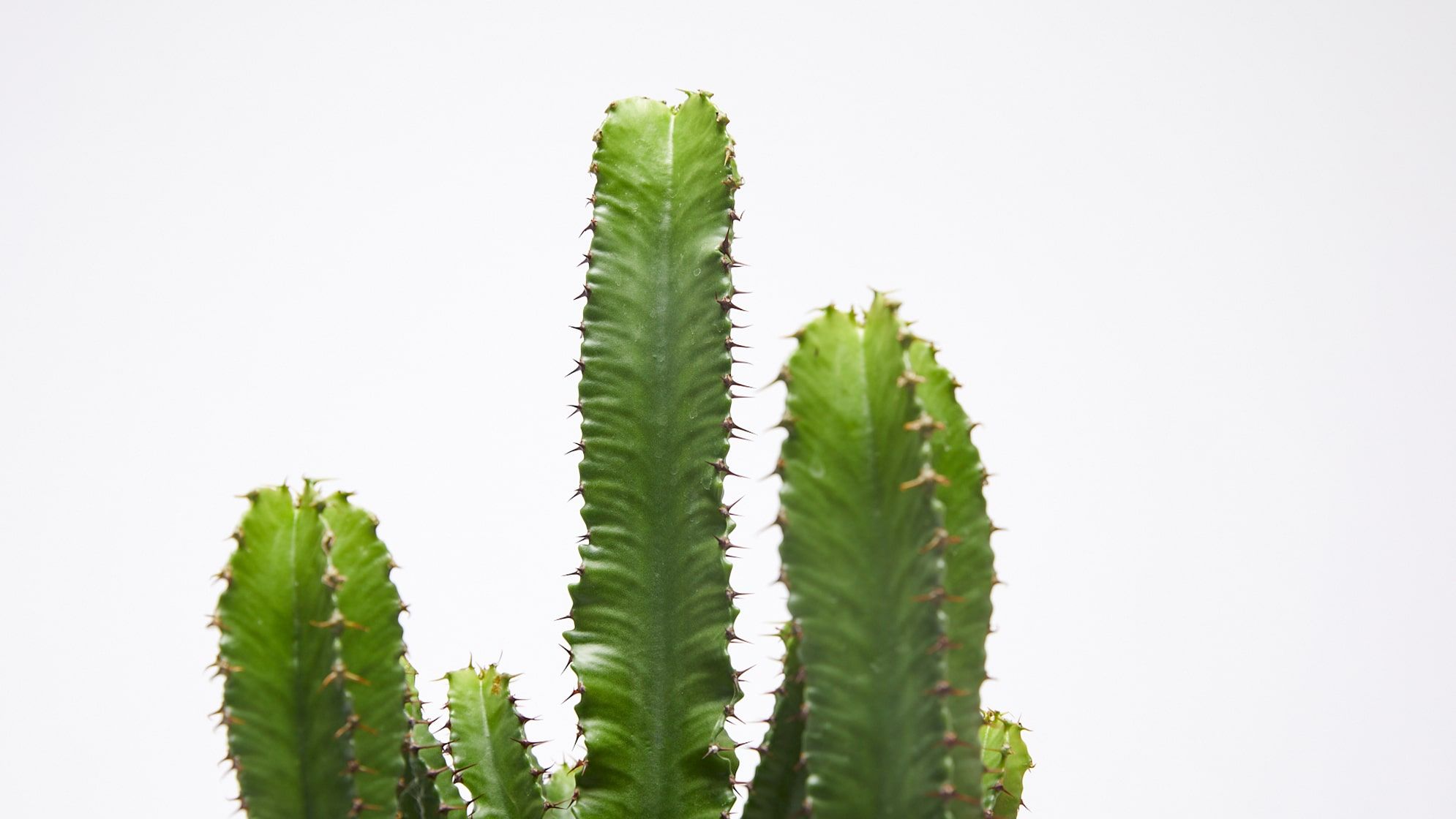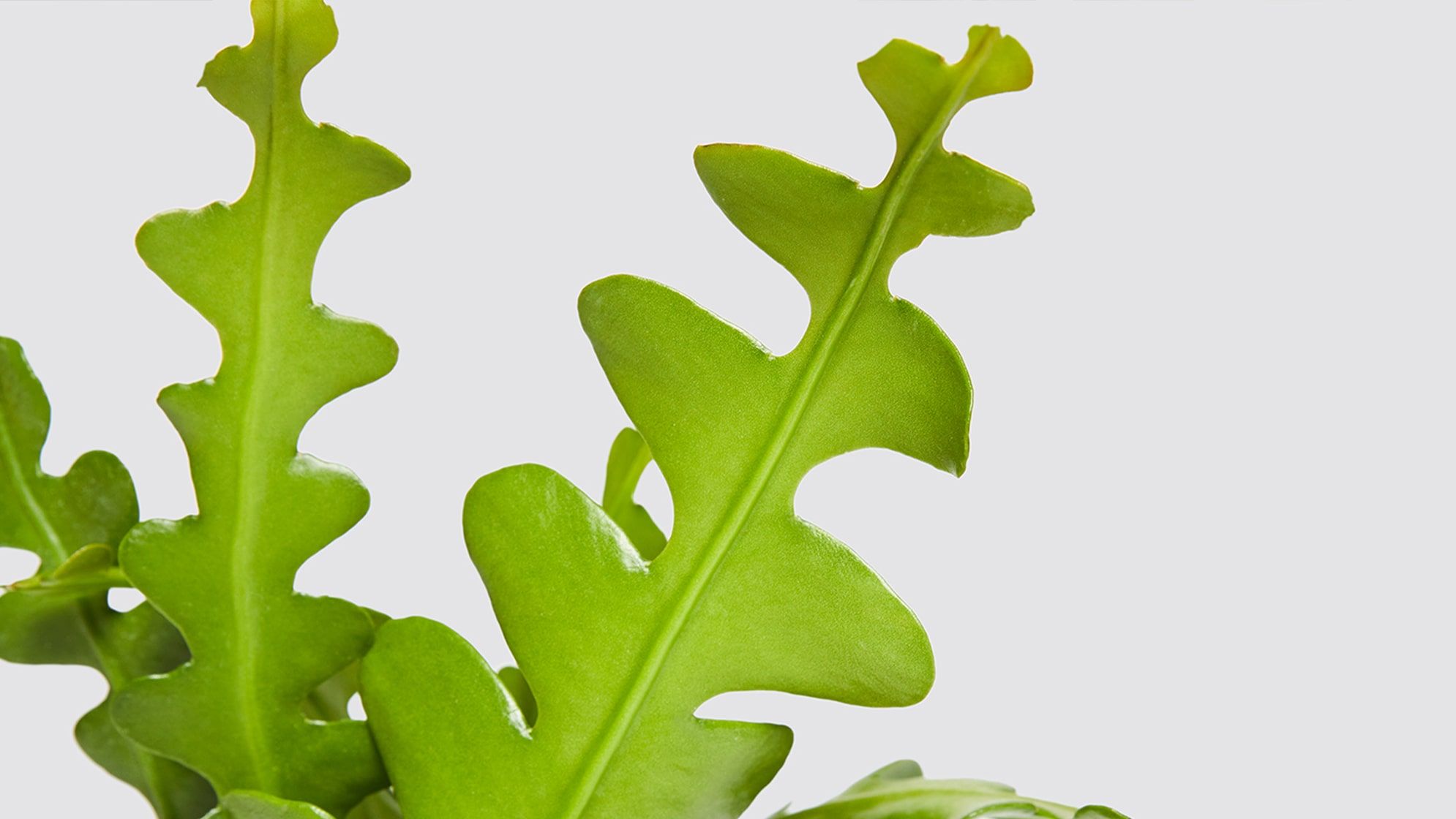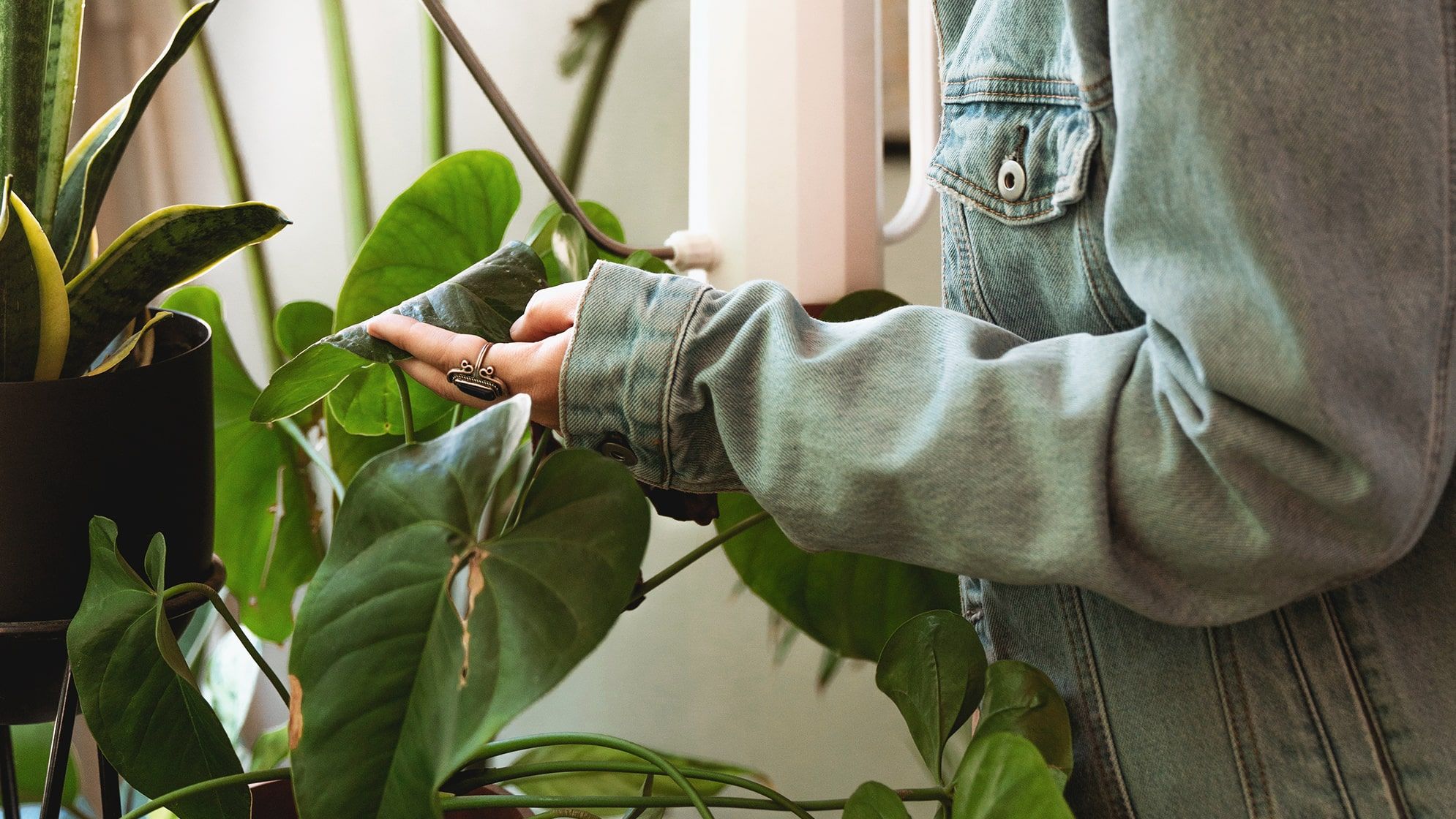Complete guide to euphorbia care
Handsome and structural, the euphorbia is a low-effort but high-impact houseplant.

Euphorbias are a large and diverse genus of plants that includes succulents, shrubs, and trees, but our euphorbia, Ian, is the most quintessentially cactus-like. They are popular houseplants due to their unique appearance and easy care. Here's what you need to know about euphorbias:
- They will soak up the sun, so give your euphorbia the brightest spot you have
- Water when the soil has completely dried out, they're used to the desert
- Fertilise with half-strength cactus feed in spring and summer
About euphorbias
The euphorbia is native to Southern Africa, where it stands out in the dry scrublands, basking in the blazing sun. As it grows, sometimes almost ten metres tall, its trunk becomes woody. Eventually, it becomes a strange, bulbous tree. Often it will flower and grow round, red fruit. As a houseplant, it won't flower - but it will still look pretty spectacular. Although they look very similar, technically euphorbias aren't cacti as they grow very small leaves. You should still be careful with their spikes, particularly as the sap is irritating to the skin and highly poisonous if consumed.

How much light does my euphorbia need?
Most euphorbia plants prefer bright, indirect light. They can tolerate some direct sun, but too much can cause sunburn. If you notice the leaves starting to yellow or the edges of the leaves curling, move the plant to a spot with less direct sunlight. For the most part, they'll be very happy soaking up the rays.
How often should I water my euphorbia?
Euphorbia plants are drought tolerant, so they don’t need to be watered often. Allow the soil to dry out completely between waterings. Overwatering can cause root rot, so be sure to check the soil before watering.
What's the best soil for my euphorbia?
Euphorbia plants prefer well-draining soil that is slightly acidic. A cactus or succulent potting mix is a good option. If you want to make your own soil, mix equal parts potting soil, sand, and perlite.

Should I fertilise my euphorbia?
Euphorbia plants don’t need a lot of fertiliser, but you can feed them once or twice in the spring and summer with a cactus-specific fertiliser.
What's the best temperature for my euphorbia?
Euphorbia plants prefer warm temperatures between 18–27°C. They can tolerate some cooler temperatures, but they won’t do well in temperatures below 10°C, so keep yours away from cool draughts.
Do I need to prune my euphorbia?
Euphorbia plants don’t require a lot of pruning, but you can trim off any dead or damaged leaves. If you want to encourage flowering, you can also prune off any flower buds before they open.

Can I propagate my euphorbia?
Euphorbia plants can be propagated by seed or stem cuttings. To propagate by seed, sow the seeds in a well-draining potting mix and keep them in a warm spot with plenty of indirect light. To propagate by stem cuttings, cut a section of stem that is at least 6 inches long and remove the leaves from the bottom half. Place the cutting in a pot filled with well-draining soil and keep it in a warm spot with bright, indirect light.
Common euphorbia problems
Euphorbia plants can be susceptible to pests such as aphids, mealybugs, and spider mites. If you notice any pests, treat them with an insecticidal soap. Overwatering can also cause root rot, so make sure to check the soil before watering.
With proper care, euphorbia plants can be a beautiful and unique addition to your home. By following these tips, you can ensure that your euphorbia plants stay healthy and thrive.
Rewild your inbox
Plant tips. Special offers. No spam.
You might like

Complete guide to fishbone cactus care
Make waves in your plant collection

Complete guide to succulent care
Small but mighty, succulents are easy to keep happy

How to spot and remove fungus gnats
Plants plagued by tiny little flies – that’ll be fungus gnats. Here’s how to get rid of them.
